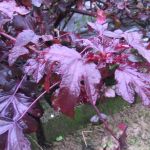| Common Name: |
Karkadé |
| Other Names: |
Roselle, Jamaican Sorrel |
| Botanical Name: |
Hibiscus sabdariffa |
| Genus: |
Hibiscus |
| Family: |
Malvaceae |
| Native Location: |
Old World Tropics |
| Cultivation: |
Well-drained, moist, neutral to alkaline soil in sun. Hibiscus need full sun and warm summers to flower well. Cut back hard in spring. Whitefly, aphids, and spider mite may attack plants under cover. |
| Propagation: |
By seed sown in spring (species only) at 13-18°C (55-64°F); by greenwood cuttings in late spring or semi-ripe cuttings in summer. |
| Harvest: |
Stems are cut for fiber. Leaves are picked when young and used fresh; flowers are cut and dried for infusions and powders. Calyces are collected when mature and used fresh or dried. Seeds for roasting are collected when ripe. |
| Height: |
2.5m (8ft) |
| :Width |
2m (6ft) |
| Hardiness: |
Z9-11 |
| Parts Used: |
Leaves, stems, flower calyces, seeds. |
| Properties: |
An aromatic, astringent, cooling herb that has diuretic effects, helps lower fever, and provides vitamin C. |
| Medicinal Uses: |
Internally as a tonic tea for digestive and kidney functions. |
| Culinary Uses: |
Leaves have a rhubarb-like flavor, eaten raw or cooked. Calyces are added to jams, curries, and chutneys, and made into cranberry-like sauces, drinks, and syrup. Seeds are eaten roasted, made into an oily sauce, or fermented into Sudanese meat substitute, furundu. |
| Economic Uses: |
Stems are a source of fiber (roselle help). Calyces are used to give color and flavor to herb teas. |
| Bibliography: |
Encylopedia of Herbs by Deni Brown Copyright ©: 1995, 2001 Dorling Kindersley Limited pg 235
|
